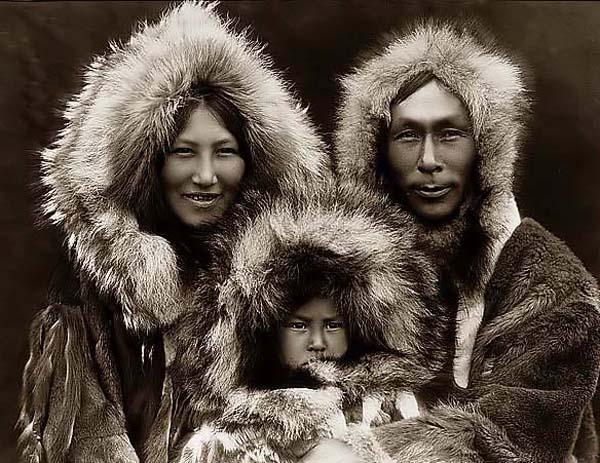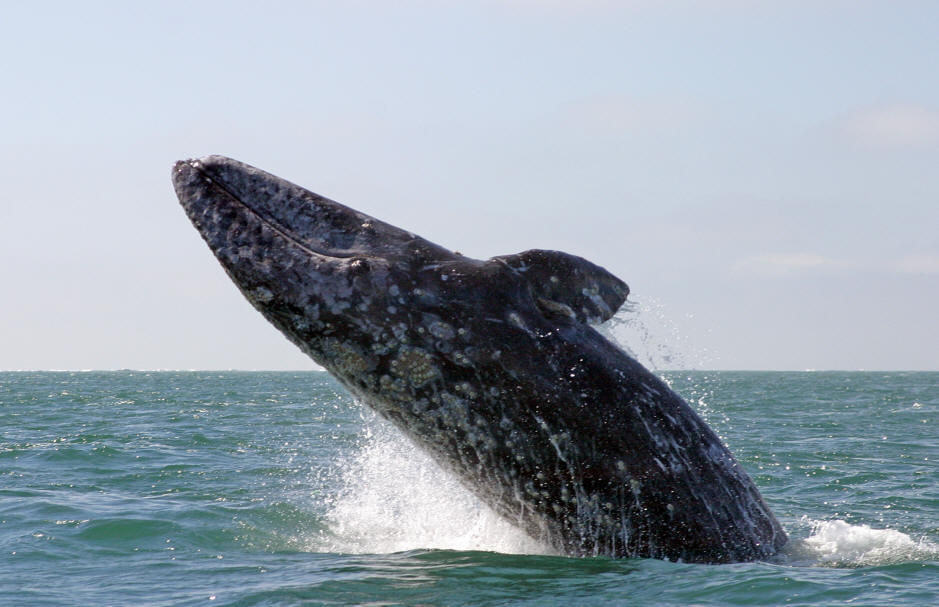In class
this week we saw a movie called “Big Miracle” which was about three Grey whales who
was trapped in the water in Alaska where they only had one hole where they
could breathe, and where the rest of the water was covered with thick ice. We were going
to find two topics this movie contained, and write about it. Since the movie is
from Alaska and it involves the native people of Alaska, the first topic I
chose to write about was the Inuit´s, the native people of Alaska. The second topic I chose was the Grey whales in Alaska, since they play a central part in the movie!
The native
people of Alaska
The
indigenous people of Alaska are the Inuit, Aleuts, and Indians. The Inuit who
numbers 30 000 of the indigenous people, are the largest of the three
groups. Since the Inuit are the largest group I chose to write about them.
Before, the Inuit lived in skin tents in the summer, and sod or drift
wood houses in the winter. They live in a cold climate, and because of this
forced adaption to the harsh Arctic weather, the Inuit have created fur
clothing even more resistant to cold than the jackets made in industrialized
countries with the help of modern science.
In the
summer, the Inuit wear only one layer of clothing, along with sealskin boots.
During winter, Inuit tend to wear two layers of clothing consisting of a suit
on the inside with fur facing the skin, and an outer suit with the fur facing the
outside. This allows the air between the two layers to create insulation, while
the fur on the inside evaporates any perspiration. Oftentimes, beads, fur, and
good luck charms made of woodcarvings or animal parts are used as decoration in
a traditional Inuit ensemble. The Inuit have also developed sunglasses made by wood,
ivory, or bone, which have small, narrow slits in them to shield their eyes
from the bright glare from the sun off the snow.
The Inuit
people live in groups ranging from a single family to several hundred members,
and have little contact with other cultures except infrequent and sometimes
hostile encounters with people living farther south in the Arctic.
In spring
and fall for example, Inuit come together in sizable groups to hunt large
animals to ensure that all necessities are met. During the rest of the year
these communities spread out along the coast and countryside in search of fish
and other types of food. Men are traditionally hunters, and women raise the
children and take care of the household. Depending upon location and season,
food for the Inuit varies from whale to foxes and includes caribou, hares,
fish, and seal. During winter on the coast a bowhead whale can provide meat for
an entire Inuit community, while inland, caribou hunted in the fall can mean
the same thing. The meat is usually eaten raw or frozen.
Transportation
for the Inuit people during summer consists of walking on foot over land or
water by boat. The two boats typically used are known as umiaks and kayaks.
Umiaks carry up to ten people, are wooden, and open. During the winter months
the Inuit travel via sled pulled by dogs.
Even though
the Inuit are not religious, they believe in spirits. They uphold that all
people, animals, things, and forces of natures have spirits. To keep the
spirits happy, the Inuit follow rules and collectively believe that if these
rules are ignored the spirits will punish them through sickness or misfortune.
We also got the question: "Do you think the movie gave a realistic
picture of how it is to live in Alaska?"
I think the movie gave a quite realistic picture of how it is to live
there. Even though I have done all this research about Alaskan natives, I do
not know that much about how the people actually live there now, because I
think that the major part of the society have a very similar way of living as
us. But I think that the indigenous people have preserved their culture, and
are still practicing their culture as Inuit at the same time as they live as
normal people. So then if what I think is true, I think the movie gave a
realistic picture of how they live. I don’t think that rescuing whales are
everyday life, but I think the Alaskan Indigenous people has preserved their
own culture while they have also adapted to the way most people live.

Alaska
Whales- The Grey whales
There are
eight species of whales that frequent the cold and icy waters of Alaska. The
Beluga, Humpback, Grey, Orca, Bowhead, Blue, Right, and Minke whales. In the movie we saw in class “Big Miracle” the whales were three grey whales, so I chose to focus on them.
Like all
mammals, whales breathe air into lungs and are warm-blooded.
Beneath the
skin lies a layer of fat, the blubber. It serves as an energy reservoir and
also as insulation. Whales have a four-chambered heart. The neck vertebrae are
fused in most whales, which provide stability during swimming at the expense of
flexibility.
The whales
breathe through blowholes, located on the top of the head so the animal can
remain submerged. Whales have a unique respiratory system that lets them stay
underwater for long periods of time without taking in oxygen.
Whalers
used to call the Grey whales "devilfish" because of the fierce
defense they put up when hunted. In its lifetime, the average gray whale
commutes over 400,000 miles – the equivalent of a trip to the moon and back.
Each year, gray whales go back and forth between their feeding grounds in the
Arctic to breeding grounds off the coast of Baja California, as we saw the Grey
whales in the movie tried to do. They spend six months of the year just
traveling!
It reaches
a length of about 15.2 m, a weight of 36 tons, and lives 50–70 years. The gray
whale is a dark slate-gray in color and covered by characteristic gray-white
patterns, scars left by parasites which drop off in its cold feeding grounds.

I hope you maybe learned something new about the Inuit or the Grey whales of Alaska, and that the text was informative!
You did a lot of research here! Hope you remember all these facts! Lets see what our Alaskan experts have to add to this! You had a lot of fact I do not know. The only question you didn't answer was if you thought the movie gave a realistic picture of how it is to live there?
ReplyDelete